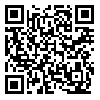BibTeX | RIS | EndNote | Medlars | ProCite | Reference Manager | RefWorks
Send citation to:
URL: http://mjiri.iums.ac.ir/article-1-4170-en.html
Background: There are no general strategies or tools to evaluate daily lesson plans; however, assessments conducted using traditional methods usually include course plans. This study aimed to evaluate the strengths and weaknesses of online survey software in collecting data on education in medical fields and the application of such softwares to evaluate students' views and modification of lesson plans.
Methods: After investigating the available online survey software, esurveypro was selected for assessing daily lesson plans. After using the software for one semester, a questionnaire was prepared to assess the advantages and disadvantages of this method and students’ views in a cross-sectional study.
Results: The majority of the students (51.7%) rated the evaluation of classes per session (lesson plans) using the online survey as useful or very useful. About 51% (n=36) of the students considered this method effective in improving the management of each session, 67.1% (n=47) considered it effective in improving the management of sessions for the next semester, and 51.4% (n=36) said it had a high impact on improving the educational content of subsequent sessions. Finally, 61.4% (n=43) students expressed high and very high levels of satisfaction with using an online survey at each session.
Conclusion: The use of online surveys may be appropriate to improve lesson plans and educational planning at different levels. This method can be used for other evaluations and for assessing people’s opinions at different levels of an educational system.
| Rights and permissions | |
 |
This work is licensed under a Creative Commons Attribution-NonCommercial 4.0 International License. |





